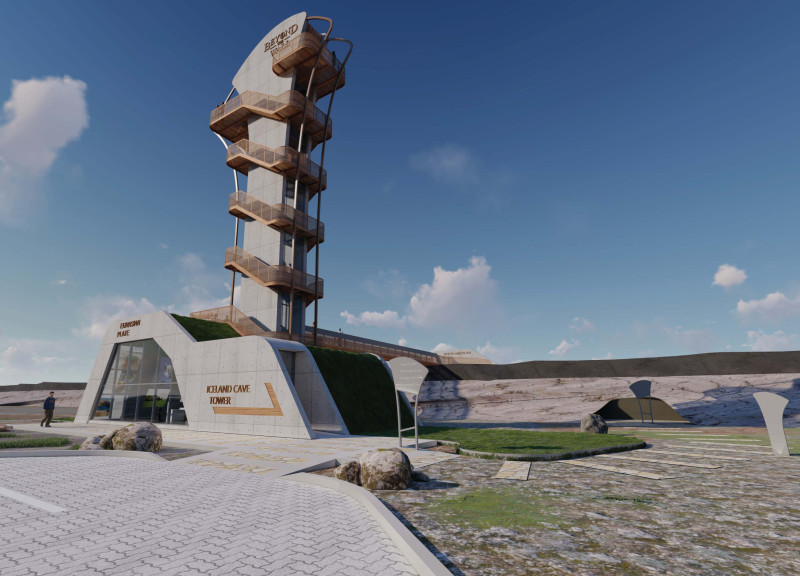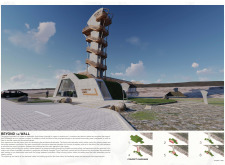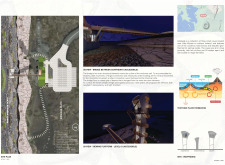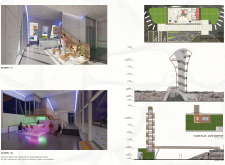5 key facts about this project
The "Beyond the Wall" project is located in northern Iceland, near the Grjótagjá caves and Lake Mývatn. This setting is marked by its unique geological features, straddling the boundary of two tectonic plates. The aim is to create a space that enhances the visitor experience and allows for meaningful interaction with the surrounding environment. The design integrates three primary components: the visitor center, the viewing tower, and a bridge, all of which work in harmony with the natural landscape.
Visitor Center
The visitor center acts as the main access point. Upon entering, guests see a folded concrete ceiling that draws their attention to an information wall designed for easy updates. This feature encourages visitors to engage with the information presented. The café is placed strategically in this central area, making it a welcoming space where visitors can relax and socialize while enjoying views of the surrounding landscape.
Viewing Tower
The viewing tower provides expansive views of the scenic surroundings. Visitors ascend via a perforated stair, which enhances their experience as they climb. This tower is thoughtfully positioned to offer direct sightlines to the Grjótagjá caves, thus connecting the users with the geological wonders nearby. The height of the tower allows visitors to gain a new perspective, deepening their understanding of the landscape's significance.
Bridge Between Continents
The bridge that connects the two tectonic plates is a key element of the design, illustrating the geological context of the area. It features a hinged connection that allows for movement between the plates, which reflects the natural dynamics of the site. Roller connections on the American side improve the bridge’s flexibility and safety. Beyond its functional role, the bridge serves as a symbolic link, encouraging visitors to appreciate the natural forces at work.
Sustainability Considerations
Sustainability is an integral part of the design, with a goal of achieving zero net energy. Active and passive systems are included, such as wind turbines and geothermal heating, aimed at reducing environmental impact. Features like triple-pane insulated curtain wall units are used to enhance energy efficiency in the visitor center and viewing tower. Additionally, the turf roof blends the structure into the landscape while contributing to thermal performance and promoting biodiversity.
The relationship between the architectural features and the natural landscape encourages visitors to engage with their surroundings. By emphasizing the geological aspects of northern Iceland, the project fosters a deeper appreciation for the unique environment.






















































